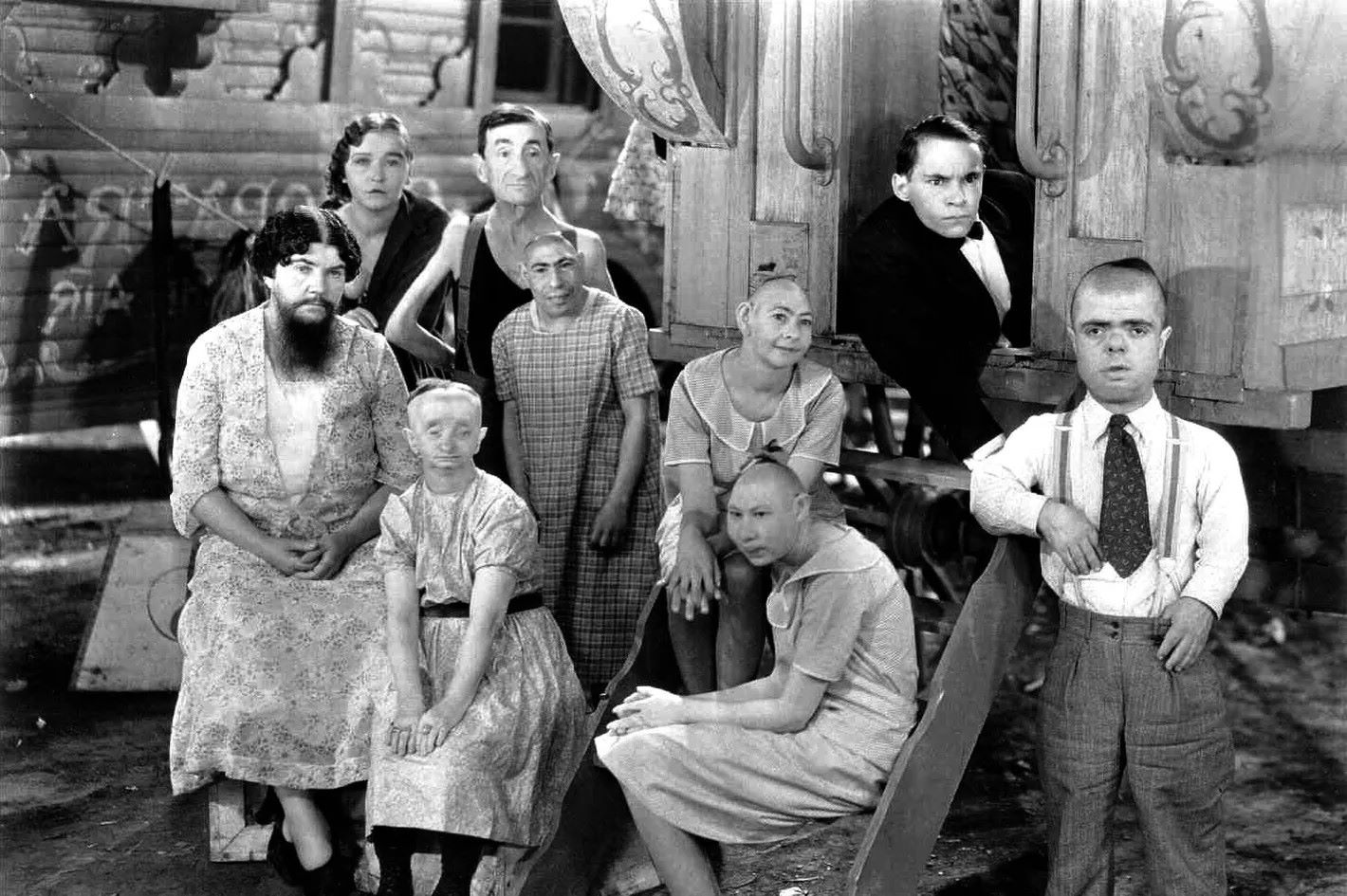
Sideshow freaks have fascinated audiences for centuries, offering a glimpse into the unusual and extraordinary. These performers, often misunderstood, played crucial roles in traveling circuses and carnivals. Ever wondered about the lives behind the curtain? From the bearded lady to the human skeleton, each had a unique story. Some found fame and fortune, while others faced exploitation. Did you know that many sideshow acts were based on medical conditions? This blog post dives into 35 intriguing facts about these captivating individuals. Ready to learn more about the history, myths, and truths surrounding sideshow freaks? Let's get started!
Key Takeaways:
- Sideshow freaks have a rich history dating back to ancient times, captivating audiences with their unique abilities and physical differences, leaving a lasting impact on culture and entertainment.
- Despite facing challenges and exploitation, sideshow freaks continue to inspire empathy, artistic expression, and a celebration of diversity, reminding us to embrace the extraordinary in every individual.
The Fascinating World of Sideshow Freaks
Sideshow freaks have captivated audiences for centuries, offering a glimpse into the extraordinary and the unusual. These performers often faced significant challenges but also found unique ways to thrive. Here are some intriguing facts about sideshow freaks that will leave you amazed.
Historical Origins
The history of sideshow freaks is rich and varied, dating back to ancient times. Let's explore some key moments and figures that shaped this unique form of entertainment.
- Ancient Roots: Sideshow freaks can be traced back to ancient Egypt, where people with physical anomalies were often revered and sometimes even worshipped as gods.
- Medieval Fairs: During the Middle Ages, European fairs and markets frequently featured individuals with unusual physical traits, drawing large crowds eager to witness the extraordinary.
- P.T. Barnum's Influence: P.T. Barnum, a 19th-century showman, played a significant role in popularizing sideshow freaks in America. His American Museum in New York City showcased numerous performers with unique physical conditions.
- The Golden Age: The late 19th and early 20th centuries are often considered the golden age of sideshows, with traveling circuses and carnivals featuring a wide array of performers.
Notable Performers
Many sideshow freaks became famous in their own right, leaving a lasting legacy. Here are some of the most notable performers who made a mark in history.
- Tom Thumb: Charles Stratton, known as General Tom Thumb, was one of P.T. Barnum's most famous attractions. Despite being only 3 feet tall, he charmed audiences worldwide.
- Chang and Eng Bunker: The original "Siamese Twins," Chang and Eng Bunker, were conjoined twins from Thailand who toured extensively in the 19th century.
- Joseph Merrick: Known as the "Elephant Man," Joseph Merrick suffered from severe deformities but gained fame and sympathy through his sideshow appearances.
- Schlitzie: Schlitzie, a microcephalic performer, became an iconic figure in sideshow history, known for his childlike demeanor and distinctive appearance.
Unique Acts and Performances
Sideshow freaks often performed unique acts that showcased their extraordinary abilities. These acts were designed to both entertain and astonish audiences.
- Sword Swallowing: Sword swallowers amazed crowds by seemingly defying the laws of anatomy, inserting long blades down their throats without injury.
- Fire Eating: Fire eaters performed daring feats involving flames, often incorporating elements of danger and mystique into their acts.
- Contortionists: Contortionists wowed audiences with their incredible flexibility, bending and twisting their bodies into seemingly impossible positions.
- Human Blockhead: This act involved performers driving nails or other objects into their nasal cavities, demonstrating a high tolerance for pain.
Challenges and Controversies
While sideshow freaks entertained many, they also faced significant challenges and controversies. These issues highlight the complex nature of their lives and careers.
- Exploitation: Many sideshow performers were exploited by unscrupulous managers who profited from their unique conditions without providing fair compensation.
- Medical Mysteries: The medical conditions of many sideshow freaks were poorly understood, leading to misconceptions and mistreatment.
- Social Stigma: Performers often faced social stigma and discrimination due to their physical differences, both within and outside the sideshow community.
- Legal Battles: Some sideshow freaks fought legal battles for their rights, seeking better working conditions and fair treatment.
Modern-Day Sideshows
While traditional sideshows have largely faded, modern-day performers continue to carry the torch, keeping the spirit of sideshow alive in new and innovative ways.
- Jim Rose Circus: The Jim Rose Circus, founded in the 1990s, brought sideshow acts to a new generation, featuring performers with unique talents and extreme acts.
- Coney Island Circus Sideshow: Coney Island remains a hub for sideshow performances, with the Coney Island Circus Sideshow continuing to entertain audiences with a mix of traditional and contemporary acts.
- Tattooed Performers: Modern sideshows often feature heavily tattooed performers who use their body art as a form of self-expression and entertainment.
- Freak Shows in Pop Culture: Sideshow freaks have found a place in popular culture, with TV shows like "American Horror Story: Freak Show" drawing inspiration from their history.
The Legacy of Sideshow Freaks
The legacy of sideshow freaks is complex, reflecting both the triumphs and challenges they faced. Their stories continue to inspire and provoke thought.
- Cultural Impact: Sideshow freaks have left a lasting impact on culture, influencing art, literature, and film.
- Advocacy and Awareness: Some former sideshow performers have become advocates for disability rights, using their experiences to raise awareness and promote inclusion.
- Preservation Efforts: Museums and organizations dedicated to preserving the history of sideshows ensure that the stories of these unique performers are not forgotten.
- Educational Programs: Educational programs and exhibits about sideshow history help to inform and educate the public about the lives and contributions of these performers.
Unusual Physical Conditions
Many sideshow freaks had unusual physical conditions that set them apart. These conditions often became the focal point of their acts and public personas.
- Hypertrichosis: Known as "werewolf syndrome," hypertrichosis causes excessive hair growth, leading to performers like Jo-Jo the Dog-Faced Boy becoming famous.
- Ectrodactyly: This condition, also known as "lobster claw syndrome," results in split hand or foot malformations, exemplified by performers like Grady Stiles Jr.
- Gigantism: Gigantism, caused by excessive growth hormone, led to performers like Robert Wadlow, the tallest man in recorded history.
- Dwarfism: Dwarfism, characterized by short stature, was a common condition among sideshow performers, with many achieving fame and success.
The Human Curiosity Factor
Human curiosity has always driven interest in sideshow freaks. This curiosity, while sometimes exploitative, also led to greater understanding and appreciation of human diversity.
- Scientific Interest: Scientists and medical professionals often studied sideshow performers to learn more about their unique conditions, contributing to medical knowledge.
- Public Fascination: The public's fascination with the unusual and extraordinary fueled the popularity of sideshows, making them a staple of entertainment for many years.
- Empathy and Understanding: Over time, increased empathy and understanding have led to more respectful and inclusive attitudes toward individuals with physical differences.
- Ethical Considerations: Modern discussions about the ethics of sideshows have prompted a reevaluation of how we view and treat those with unique conditions.
The Enduring Appeal
Despite the controversies and challenges, the appeal of sideshow freaks endures. Their stories continue to captivate and inspire, reminding us of the resilience and diversity of the human spirit.
- Artistic Inspiration: Sideshow freaks have inspired countless artists, writers, and filmmakers, leaving an indelible mark on creative expression.
- Community and Camaraderie: Many sideshow performers formed close-knit communities, finding camaraderie and support among others who shared similar experiences.
- Celebration of Uniqueness: Ultimately, sideshow freaks remind us to celebrate uniqueness and embrace the diversity that makes each person extraordinary.
The Legacy of Sideshow Freaks
Sideshow freaks have left a lasting mark on history. These performers, often misunderstood, showcased incredible resilience and talent. They turned their differences into strengths, captivating audiences worldwide. From the bearded lady to the human skeleton, each had a unique story that challenged societal norms.
Their legacy isn't just about entertainment. It's a testament to human spirit and diversity. These individuals paved the way for greater acceptance and understanding of physical differences. They showed that everyone, regardless of appearance, has value and deserves respect.
Today, we remember sideshow freaks not just for their performances but for their courage. They remind us to embrace our uniqueness and celebrate diversity. Their stories continue to inspire, teaching us that true strength lies in embracing who we are.
Frequently Asked Questions
Was this page helpful?
Our commitment to delivering trustworthy and engaging content is at the heart of what we do. Each fact on our site is contributed by real users like you, bringing a wealth of diverse insights and information. To ensure the highest standards of accuracy and reliability, our dedicated editors meticulously review each submission. This process guarantees that the facts we share are not only fascinating but also credible. Trust in our commitment to quality and authenticity as you explore and learn with us.


